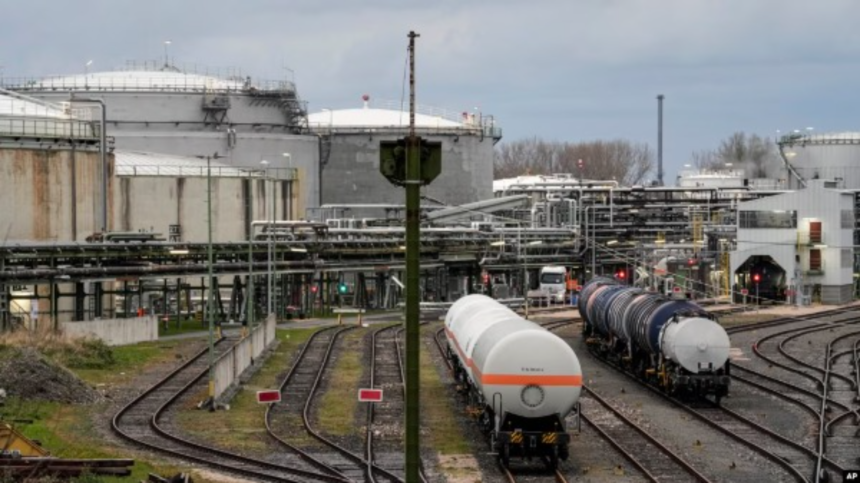Gas prices in Europe have risen after Ukraine stopped the transit of Russian gas through its territory to the European Union. According to Voice of America correspondent Henry Ridgwell, Moscow once fulfilled over a third of Europe’s gas needs. However, the European continent has managed to reduce its reliance on Russian gas since Russia’s invasion of Ukraine in 2022.
Wholesale gas prices in Europe spiked on Thursday to their highest level since October 2023.
This increase followed Ukraine’s decision to halt the transit of Russian gas through its territory to Europe starting on January 1. Moscow is set to lose over $5 billion annually as a result. Ukraine will lose about $800 million in fees it previously earned from the gas transit. However, the impact on Europe is expected to be limited, according to analyst Thomas O’Donnell.
“Everyone has been prepared for this. Of course, there are winners and losers up to a point. Some countries like Slovakia, Hungary, and Austria are more dependent on this than others. They won’t face gas shortages, but they will have to pay more, as everyone else will,” said O’Donnell, from the Wilson Center.
Ukrainian President Volodymyr Zelensky said last month that he would no longer allow Russia “the opportunity to earn billions of dollars” while its forces continue their aggression on Ukrainian soil.
Slovak Prime Minister Robert Fico, who is close to Russian President Vladimir Putin, met with him in Moscow last month. Fico opposes Western support for Kyiv.
In a speech on Wednesday, following Ukraine’s cessation of Russian gas transit, Fico accused the European Union of sacrificing the interests of smaller member states for what he called “meaningless” geopolitical objectives.
“This will have a drastic impact on all of us in the European Union, but not on the Russian Federation,” said Fico.
In reality, the European Union has drastically reduced its reliance on Russian gas, partly due to a significant increase in gas imports from the United States.
By 2024, Russian gas imports through Ukraine accounted for about 5% of Europe’s total gas supplies. Some of this gas was sent to Western Europe via Slovakia, which, according to O’Donnell, explains the concerns of the Slovak Prime Minister.
“Slovakia was earning about half a billion dollars from gas transit fees through its Slovak pipeline system,” said O’Donnell from the Wilson Center.
Before the start of Russia’s aggression in Ukraine in February 2022, Russia’s state-owned company, Gazprom, was Europe’s largest gas supplier. According to O’Donnell, Russian leader Vladimir Putin miscalculated Europe’s response to the war in Ukraine.
“President Putin portrays himself as a great Russian nationalist. This great Russian nationalist has just lost one of the largest businesses Russia has ever had.”
Russia’s alternative routes for supplying gas to Europe are limited.
The “Yamal-Europe” pipeline, through Belarus, was shut down in 2022. A few months later, the “Nord Stream” pipeline under the Baltic Sea to Germany was sabotaged.
Russia is still able to supply gas to Hungary, Turkey, and Serbia through the “TurkStream” pipeline. /VOA







